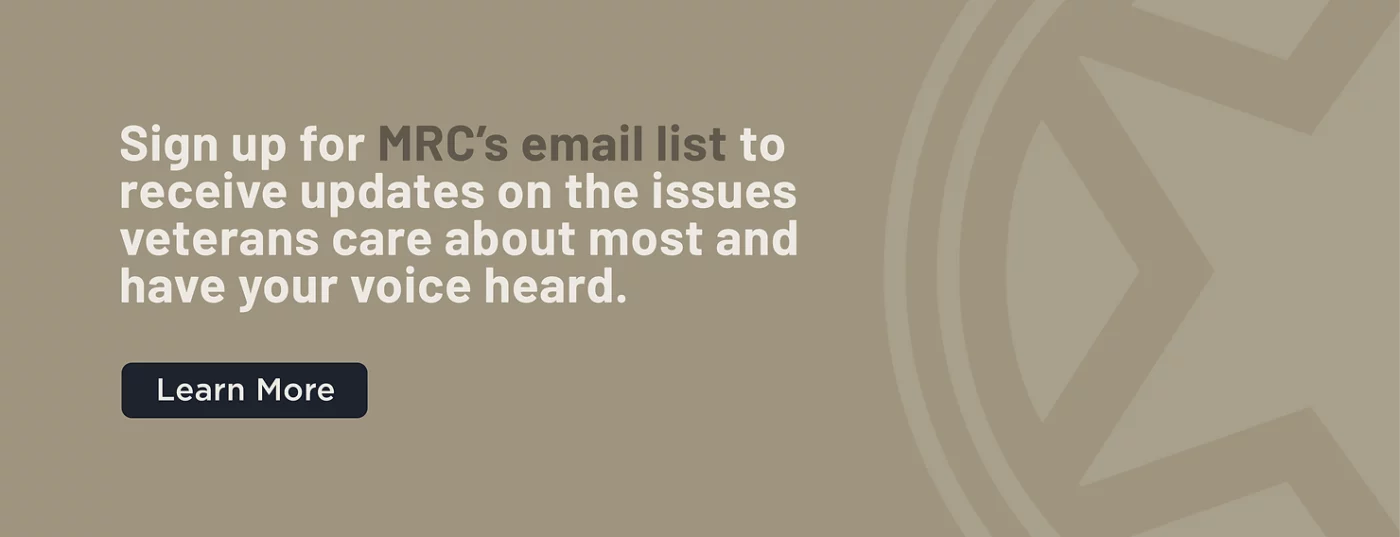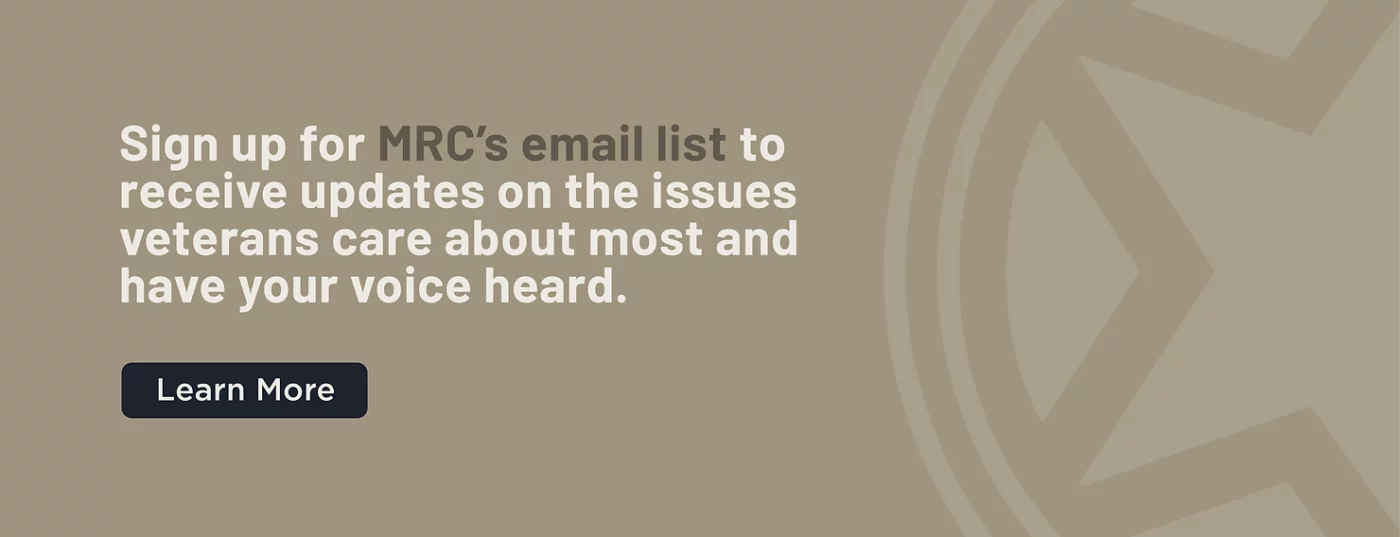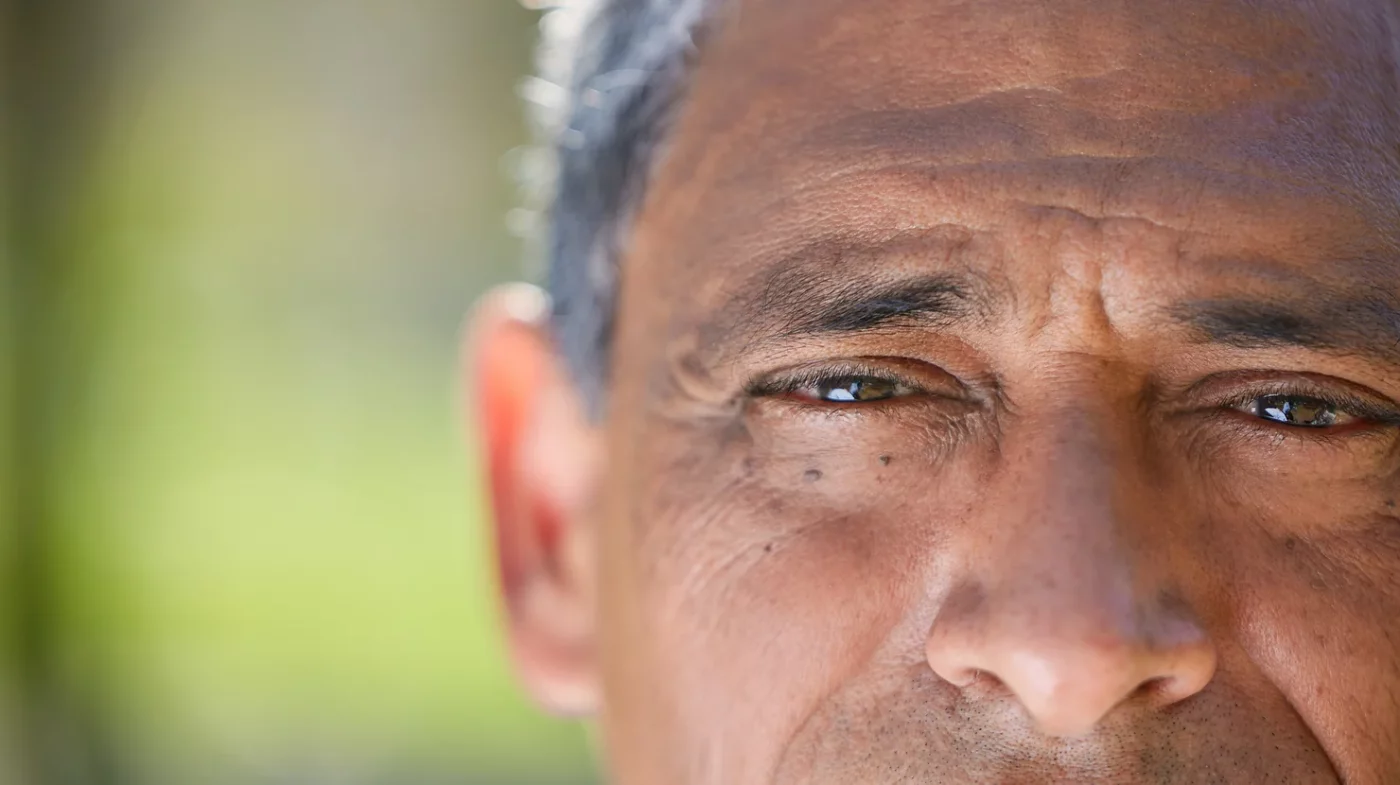
The number of homeless veterans is increasing – rising more than 7% from 2022 to 2023. On an average night in 2023, 20,067 veterans were living in shelters. A staggering 15,507 veterans were living without any shelter at all.
Veteran homelessness is one of the top issues of concern for U.S. veterans. In a Mission Roll Call poll of veterans nationwide, more than 90% of veterans said they do not think enough is being done to address veteran homelessness.
Solving this issue is complex, and requires on-the-ground solutions as well as political action. That’s why Mission Roll Call is committed to increasing awareness of veteran homelessness among policymakers and to advocating for concrete solutions on Capitol Hill, including understanding and addressing the root causes.
This article will address the following questions:
- Are veterans at higher risk of homelessness than nonveterans?
- What is contributing to the increase in homelessness among veterans?
- How does being homeless affect veterans?
- What is the U.S. government doing to address homelessness?
- What resources are available to homeless veterans?
- What can you do to help veterans who are experiencing homelessness?
Are veterans at a higher risk of homelessness than nonveterans?
Veterans have a higher likelihood than nonveterans of becoming displaced from their homes. They make up about 7% of all homeless adults in the U.S., even though they only represent around 6% of the total U.S. population.
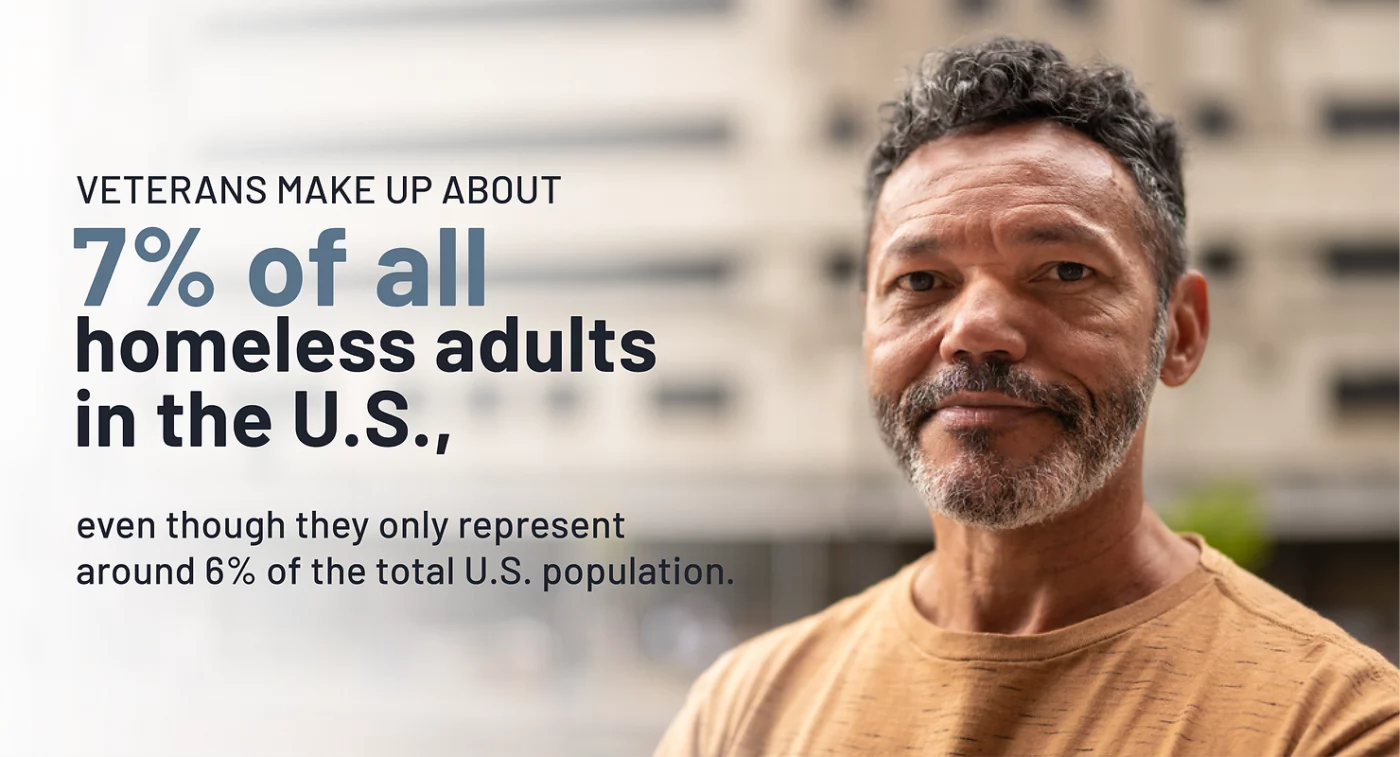
Homelessness includes what is known as “sheltered homelessness” – housing in an emergency shelter, transitional housing, or a safe haven program – as well as “unsheltered homelessness” – living and sleeping in places not meant for human habitation. Troublingly, from 2022 to 2023, the number of unsheltered veterans rose 14%.
The recent increase in homelessness among veterans is a troubling and newer trend. From 2010 to 2022, the number of veterans experiencing displacement decreased by over 50%, according to the U.S. Department of Urban and Housing Development.
In 2023, 35,574 veterans were experiencing homelessness – 22 of every 10,000 veterans in the United States – compared to 20 out of every 10,000 nonveterans experiencing homelessness in 2023. Just over half of these veterans were staying in sheltered locations, according to the Department of Housing and Urban Development (HUD).
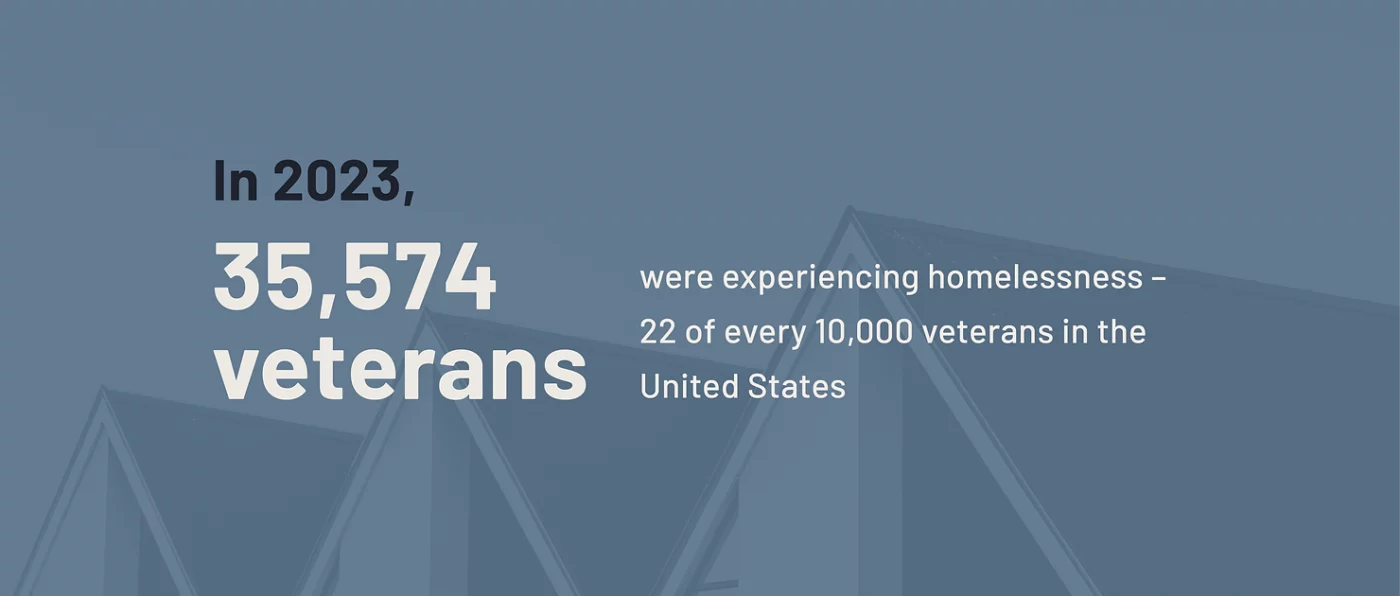
In addition, there are certain groups among homeless veterans that are disproportionately affected. Men make up about 88% of homeless veterans, while female veterans are more likely to be homeless with children – highlighting the need for family-specific support.
There are also racial disparities. Black veterans are significantly overrepresented among homeless veterans, making up 31% of the homeless veteran population (but only 14% of the overall veteran population). And geographically, the risk of homelessness among veterans varies. California, Florida, and Texas have some of the highest concentrations of homeless veterans, with California alone accounting for 30% of all homeless veterans in the U.S.
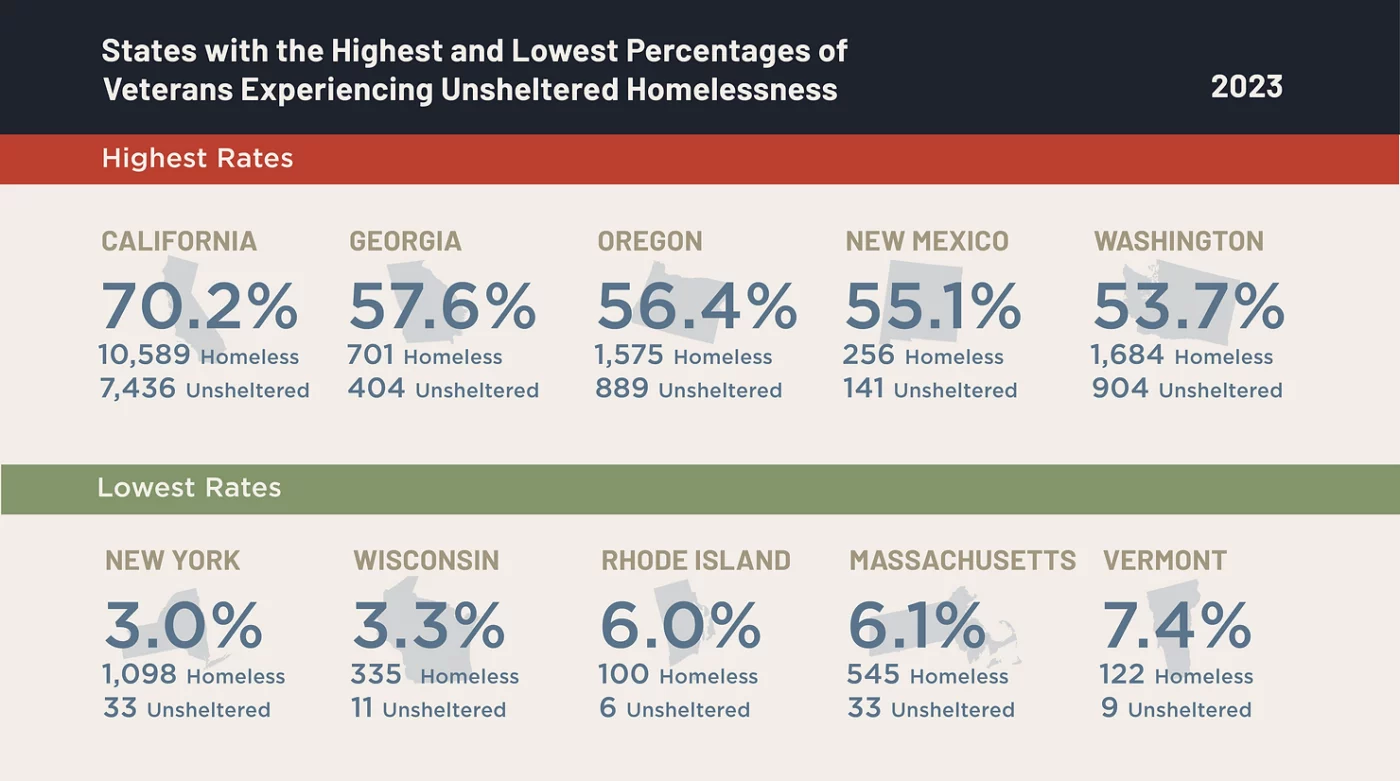
What is contributing to the increase in homelessness among veterans?
It is difficult to pinpoint any one root cause of the veteran housing crisis; rather, it is an accumulation of factors over time.
Mission Roll Call has outlined several common challenges veterans face. These challenges can be closely linked with homelessness:
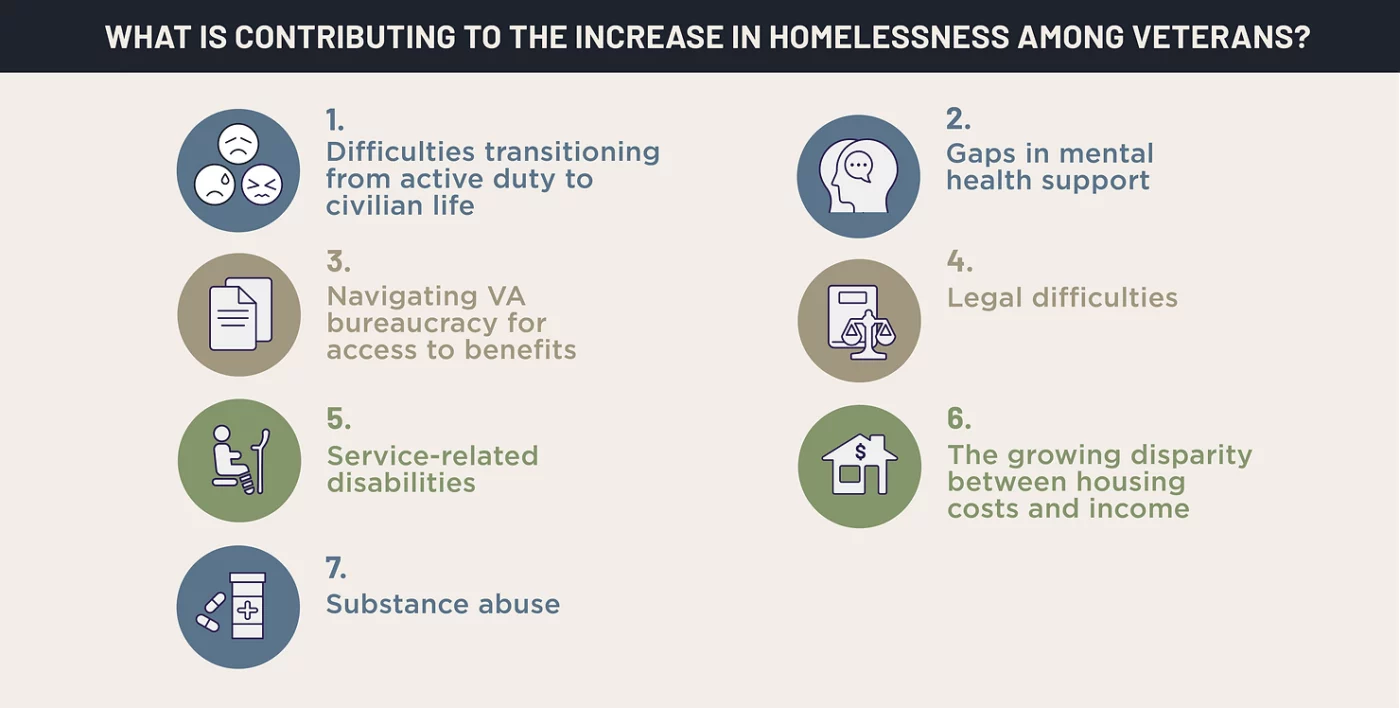
1. Difficulties transitioning from active duty to civilian life
In transitioning to civilian life, navigating the VA healthcare system, finding affordable housing, and applying for jobs can be a difficult and drastic shift. According to Pew Research Center, only one in four veterans has a job lined up after leaving the military. And a survey conducted by Prudential found that more than two-thirds of veterans consider finding a job to be the greatest challenge in their transition to civilian life.
2. Gaps in mental health support
Mental health conditions are prevalent among homeless veterans. According to the National Health Care for Homeless Council, pre-existing conditions are exacerbated by the stress and instability of homelessness. As a result, many homeless veterans resort to substance use as a coping mechanism, which further deteriorates their health.
The World Health Organization reports that people suffering from severe mental health issues face additional barriers to employment. But there are systemic healthcare gaps that can prevent veterans from getting the care and support they need for mental health conditions.
3. Navigating VA bureaucracy for access to benefits
Nearly half of all veterans are unaffiliated with the Department of Veterans Affairs (VA) or a veteran service organization. Those who are may face long wait times and fail to get the care they need in a timely manner.
4. Legal difficulties
Many homeless veterans don’t have identification or legal documentation like a driver’s license or birth certificate. Lacking identification prevents them from being able to access many services and programs. Additionally, without an address to receive tickets or other legal paperwork, veterans who have unpaid fines, or have been arrested for a misdemeanor may miss court dates, triggering a warrant.
5. Service-related disabilities
About 30% of veterans had a service-connected disability in 2023, and an estimated 5.25 million veterans identify as having a disability that requires transportation assistance. These disabilities can impact mental health and make it harder to find stable employment.
According to the VA, other factors impacting veteran homelessness include:
6. The growing disparity between housing costs and income
Income inequality drives hundreds of people into homelessness on any given night in dozens of communities across the U.S. Many veteran households face a housing cost burden, spending a large portion of their income on housing. Female veterans, in particular, tend to have lower incomes and are less likely to own homes, making them more vulnerable to homelessness.
7. Substance abuse
Opioid abuse is a growing and critical problem for veterans. Homeless veterans are more likely to have opioid addiction, according to the VA’s Center for Health Equity Research and Promotion. Additionally, veterans who are diagnosed with a drug use disorder are more than twice as likely to become homeless as others.
How does being homeless affect veterans?
Homelessness significantly worsens veterans’ health, both physically and mentally. A National Health Care for Homeless Council study depicts that the homeless have higher rates of illness and die on average 12 years prior to housed Americans.
Homeless veterans are three times more likely than the rest of the U.S. population to be infected with HIV. They’re also more likely to be in need of dental care. Dental problems, like missing teeth, can be “tremendous barriers” to looking for and finding work.
Research also shows that homeless individuals are more frequently victims of violent crimes than the general population. Between 2020 and 2022, the National Coalition for the Homeless tracked nearly 2,000 violent incidents targeting homeless individuals.
The trauma of homelessness can also lead to increased suicide rates among homeless veterans. Suicide rates among homeless populations are estimated at nine times that of the U.S. general population.
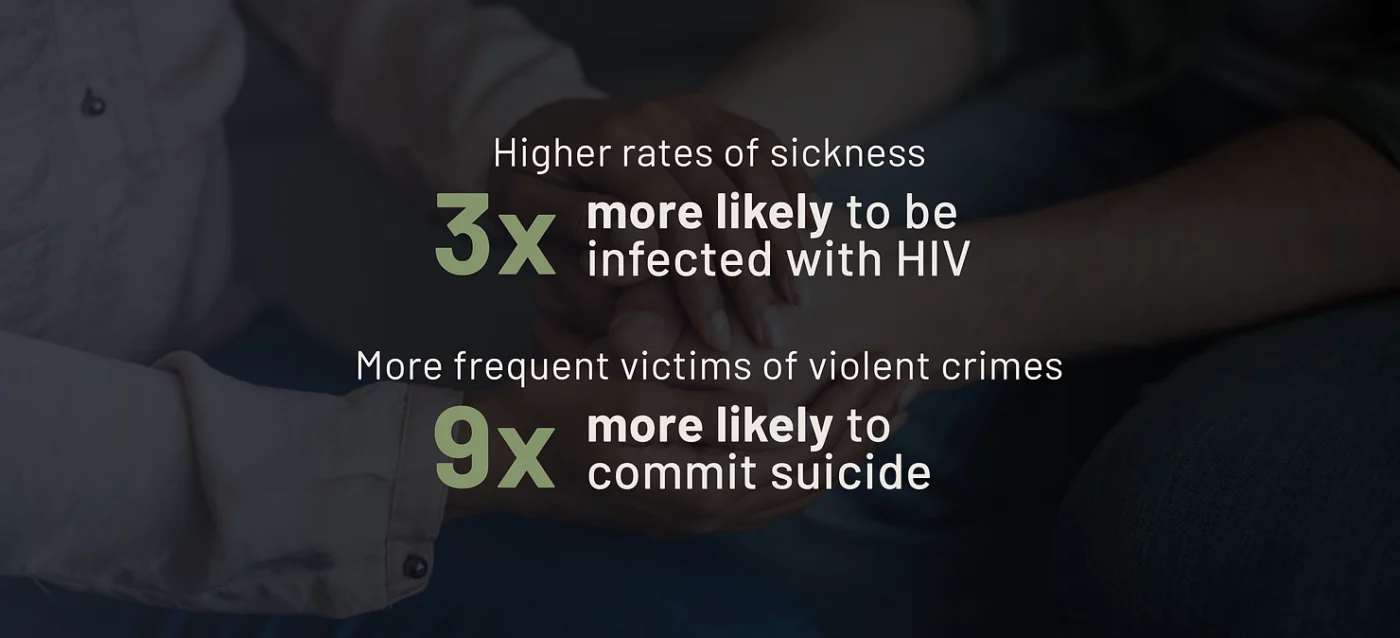
What is the U.S. government doing to address homelessness?
The U.S. government has implemented several initiatives to combat veteran homelessness, focusing on both immediate housing solutions and long-term support services.
In 2024, the Department of Veterans Affairs set goals to permanently house at least 41,000 homeless veterans and ensure that 95% of them do not return to homelessness within the year. They also plan to engage with 40,000 unsheltered veterans to provide them with housing and essential services.
Each year, HUD awards Homeless Assistance Grants to communities that provide housing and related services at the local level – which is critical to reaching veterans who don’t use VA services. In January 2024, HUD announced nearly $3.16 billion in Continuum of Care program awards for over 7,000 projects that provide housing assistance and/or supportive services to people experiencing homelessness.
The administration also launched initiatives like the Housing and Services Partnership Accelerator, which helps states coordinate housing and health services for homeless individuals. This initiative helps fulfill goals stated in All In: The Federal Strategic Plan to Prevent and End Homelessness, which aims to reduce homelessness by 25% by January 2025.
Additionally, the VA is conducting research into innovative ways to increase homeless veterans’ access to care. For example, they have found that peer mentors can play important roles in homeless veterans’ lives. Another finding is that integrating legal aid with medical care improves both mental health and housing – and may help reach veterans who do not use the VA for medical care. A study published in 2017 found that veterans’ mental health and housing situation improved when they accessed free legal services in a VA facility.
What resources are available to homeless veterans?
There are four different federal agencies (the Departments of Veterans Affairs, Agriculture, Labor and Housing and Urban Development) that fund more than ten different homelessness and food insecurity programs, including SNAP and the VA/HUD voucher program, to fight homelessness in the veteran community.
Examples of VA programs include:
- The HUD-VA Supportive Housing (HUD-VASH) program provides rental assistance and case management services to veterans.
- Homeless Patient Aligned Care Teams (HPACTs) provide medical care, mental health treatment, and case management services.
- The VA’s Legal Services for Veterans (LSV) program helps veterans with issues such as eviction prevention, accessing public benefits, and resolving other legal matters that impact their housing stability.
In total, over $50.3 billion has been collectively spent on government programs since FY2005. During that same period, health care obligations for homeless veterans reached $7.8 billion annually in fiscal year 2020, and $700 million for homeless-veteran programs was included in COVID-19 relief packages. Yet, veteran homelessness and hunger persist.
It’s clear that money alone is not enough to fix this problem. Mission Roll Call is pushing for more funding for community-based nonprofits and businesses that are on the frontlines of many veterans’ services. These services don’t just address homelessness specifically but also target the root causes of homelessness. These community organizations have touchpoints in the veteran community that the VA will never have.
For example, The Boulder Crest Foundation focuses on post-traumatic growth, offering programs and retreats designed to help veterans and their families build resilience and thrive in their civilian lives. Team Red, White and Blue connects veterans through physical and social activity.
America’s Warrior Partnership connects veterans and their families with local, regional and national resources. And U.S. VETS provides housing, mental health programs, career services, and more, serving more than 5,500 veterans and families across the country every night.
What can you do to help veterans who are experiencing homelessness?
Without proper community and government support, many veterans struggle to maintain stable housing. Even one veteran experiencing homelessness is too many in a nation that prides itself on service. Support for veterans has to start early, including paying active duty military – especially junior enlisted – the necessary salaries they need to live, thrive and save for their futures.
Mission Roll Call provides veterans with a powerful, unified voice that is heard by our nation’s leaders. Veterans have spoken: veteran homelessness needs to be a top priority for our government.
Here’s how you can make a difference:
- Support Mission Roll Call, which advocates for legislation to help homeless veterans.
- Donate to organizations and nonprofits that provide essential services such as housing, healthcare, and job training to veterans. Mission Roll Call has published a list of some vetted nonprofits.
- Volunteer at local shelters, VA facilities, or organizations that support veterans experiencing or at risk for homelessness.
- If you’re an employer, consider hiring veterans. Their skills and experiences are valuable, and providing employment can help them transition to stable living.
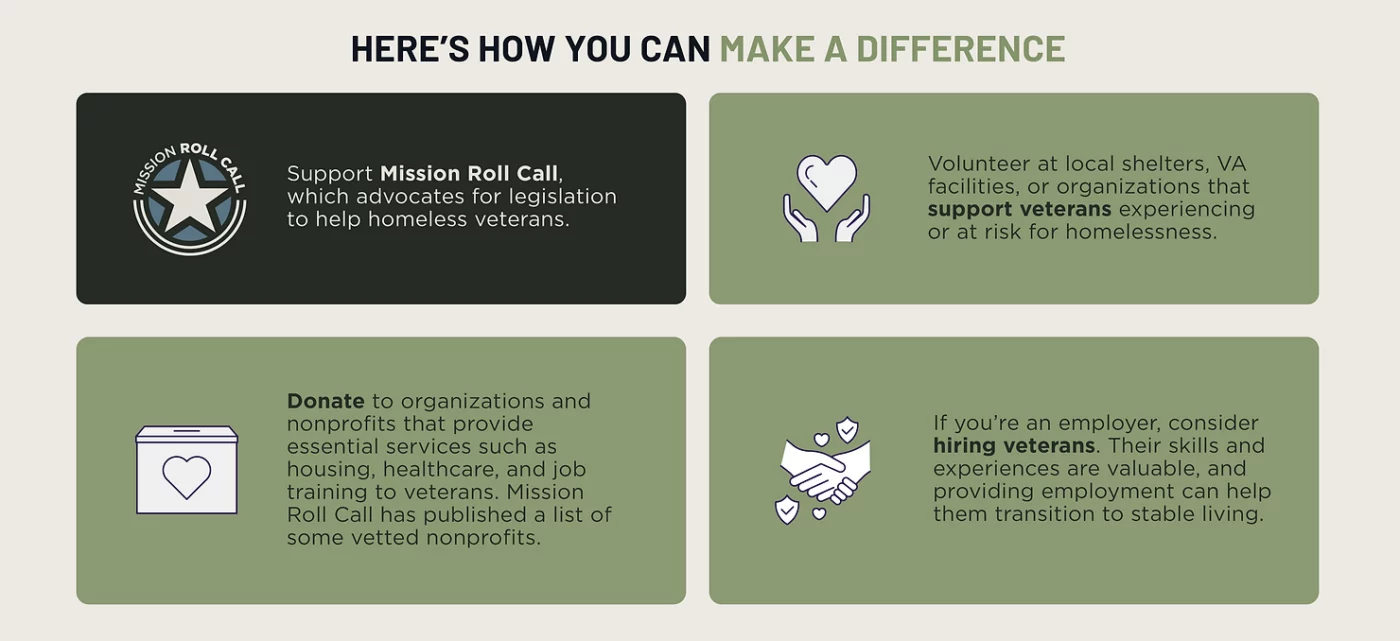
It’s important to advocate for legislative action by writing to your senator about bills that aim to improve housing and services for veterans. One issue that needs reform is that currently, landlords who use funding from government programs have little incentive to permanently fix the problem of homelessness, since getting veterans into permanent housing from temporary housing means the loss of federal funding.
These federal programs do help, but the number of veterans still struggling to find permanent solutions to housing problems makes clear that our current systems are not enough.
Importantly, research has found that Americans have become more compassionate toward the homeless in recent years. These findings, alongside legislative attention and increased public awareness of the issue of veteran homelessness, are important steps for ending veteran homelessness in the United States.
